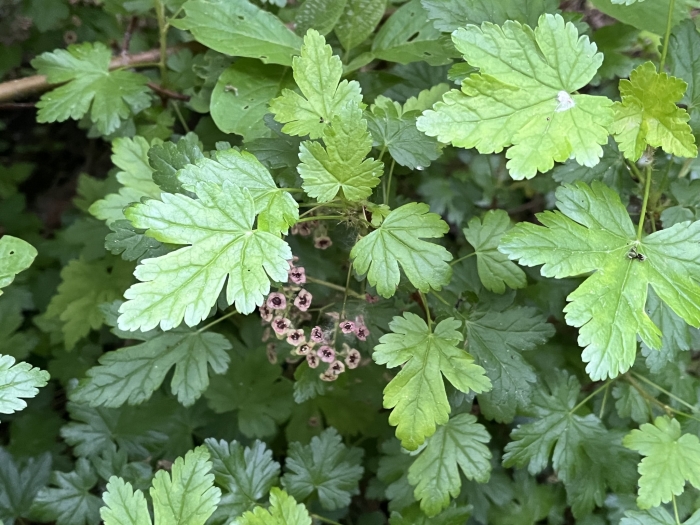Prickly Currant
(Ribes lacustre)
Prickly Currant (Ribes lacustre)
/
/

Brian Finzel
CC BY-SA 4.0
Image By:
Brian Finzel
Recorded By:
Copyright:
CC BY-SA 4.0
Copyright Notice:
Photo by: Brian Finzel | License Type: CC BY-SA 4.0 | License URL: http://creativecommons.org/licenses/by-sa/4.0/ | Rights Holder: Brian Finzel | Publisher: iNaturalist | Date Created: 2023-06-09T12:35:23Z |























Estimated Native Range
Summary
Ribes lacustre, commonly known as prickly currant or black gooseberry, is a deciduous shrub native to moist coniferous and mixed forests, as well as swamps and stream banks from California to Alaska and east to Pennsylvania and Newfoundland. It typically grows to a height and width of 3-6 feet (0.9-1.8 meters). The plant has a spiny stem and lobed, maple-like leaves. It produces clusters of small, reddish to maroon flowers in the spring, which are moderately showy and followed by edible, dark purple berries that are attractive to wildlife.
Prickly currant is valued for its hardiness and adaptability to a wide range of soil conditions, including both acidic and alkaline soils. It is often used in naturalistic plantings, as a wildlife attractant, and for erosion control due to its suckering habit. In cultivation, it prefers partial shade to full sun, moist soil, and can tolerate wet conditions. While it is not commonly afflicted by diseases, powdery mildew and leaf spot can occur. Gardeners should be aware that Ribes species can serve as alternate hosts for white pine blister rust and may be regulated in areas where this is a concern.CC BY-SA 4.0
Prickly currant is valued for its hardiness and adaptability to a wide range of soil conditions, including both acidic and alkaline soils. It is often used in naturalistic plantings, as a wildlife attractant, and for erosion control due to its suckering habit. In cultivation, it prefers partial shade to full sun, moist soil, and can tolerate wet conditions. While it is not commonly afflicted by diseases, powdery mildew and leaf spot can occur. Gardeners should be aware that Ribes species can serve as alternate hosts for white pine blister rust and may be regulated in areas where this is a concern.CC BY-SA 4.0
Plant Description
- Plant Type: Shrub
- Height: 2-4 feet
- Width: 1-2 feet
- Growth Rate: Rapid
- Flower Color: Pink
- Flowering Season: Spring, Summer
- Leaf Retention: Deciduous
Growth Requirements
- Sun: Full Sun, Part Shade
- Water: Medium
- Drainage: Medium
Common Uses
Bird Garden, Butterfly Garden, Low Maintenance, Water Garden
Natural Habitat
Moist coniferous and mixed forests, swamps, and stream banks
Other Names
Common Names: Prickly Currant, Black Swamp Currant, Swamp Gooseberry, Bristly Black Currant, Swamp Currant, Black Gooseberry, Swamp Black Gooseberry, Black Swamp Gooseberry
Scientific Names: , Ribes lacustre, Limnobotrya echinata, Limnobotrya lacustre, Limnobotrya lacustris, Limnobotrya parvula, Ribes echinatum, Ribes echinatum, Ribes lacustre f. lacustre, Ribes lacustre f. subblandum
GBIF Accepted Name: